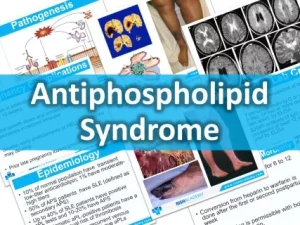- Newsletter
How to Study Pathophysiology?
What is Pathophysiology?
Pathophysiology (also called physiopathology) is a combination of pathology and physiology. In pathophysiology, we study the mechanical, physical, and biochemical changes inside our body that occur either due to a disease or resulting from a syndrome.
Pathophysiology is a subject that you must understand the process and not to memorize by heart, like memorizing drug names. So to study pathophysiology, you should make sure that you know anatomy and physiology, because they are connected to each other.
However, I would say that pathophysiology is one of the most important subjects you should study if you’re a student in medicine, nursing or any health related course dealing with human lives. Because you should understand why a patient is presenting with certain clinical signs and symptoms and why you are performing certain investigations and interventions.
How to study Pathophysiology?
Pathophysiology is one of the difficult subjects, yet interesting subject in medical school. Your knowledge in Pathophysiology will help you throughout your carrier, also one day it will be lifesaving.
We’ve explained all of the most effective methods to study Pathophysiology to cut your study time in half and retain more to score highest marks in your exams.
1) Create a suitable environment to study
Creating a good learning environment allows you to maximize your learning efficiency. Combination of effective time management, good reading and note taking skills, Illustration skills, creating effective test taking strategies and your hard work will give you a productive outcome. Identify all of your environmental distractions that interfere with your concentration. STARVE YOUR DISTRACTIONS, FEED YOUR FOCUS! That’s the key to success.
2) Know your basic Anatomy & Physiology
Remember! Anatomy, Physiology and Pathology are not just for exams, they are for life. You don’t have to be a genius in Anatomy and Physiology, but you should know the basics to understand the Pathology and what happens inside the body in diseases. So if you’re going to study the pathology of the brain in coming week, just go through your basic anatomical structure of the brain, surrounding structures, their blood supply, and lobes of the brain controls each function and the physiology of the brain. So, when you go to lecture and your professor is talking about stroke, you will clearly understand how the blood clot blocks the cerebral artery and functions affected by the particular brain lobe supplied by the artery.
3) Know teaching style of your professor!
Every professor is different in their teaching style. Some may give you study notes prior to lectures, so you can have a basic idea before you go to the lecture. Some professors require students to learn by themselves using textbooks and through research. If you have such professors, you can ask your seniors to see how they studied the subject.
Some professors give you homework and assignments based on the theories that are mainly assessed in the exams. So you should focus more on such topics and related questions.
4) Collect resources to study
There are actually a lot of resources available to you to make your studying endeavors easier. You should use all of the resources and a combination of learning techniques to maximize your studying effectiveness and reinforce the concepts in pathophysiology. You can take advantage of your textbooks, class handouts, reading materials, and lab material your professor provides, and also there are many Online Study Resources & Notes that are accessible to students.
- Textbooks: Always use standard textbooks for your studies. They provide you the highly reliable resources. Because you can clarify your doubts or read up on a chapter you’re not familiar with.
- Reading materials: You should always study your reading materials and notes provided by your university. Because they will provide notes from chapters focusing on what you must know for your exams.
- Google: Google is always our best friend to search on any topic. You can search mnemonics, diagrams and word associations to make your learning easy. But always make sure that you refer from a trusted sources. Because not everything you find in google is 100% true. I always use and recommend websites like Medscape, PubMed and MayoClinic for high quality and reliable articles.
- YouTube: There are many YouTubers who make our learning easy. Many complex topics in Pathophysiology are explained in an easy way on YouTube. This is especially helpful for the students who are visual or aural learners.
You can get access to our Medical Resources Library to get access to more than 300 medical presentations and all other medical resources that will be helpful for your entire career.
5) Don’t memorize the facts, UNDERSTAND IT!
You can’t memorize the facts without understanding it. You can put all the mechanism in a flowchart and you can make study sheet for each disease. If you try to memorize the facts, you’ll forget them very easily. So you have to understand the pathophysiological process that happens in a disease.
6) Take Notes
You don’t remember everything you hear, but when you write down notes, it will help you retain more information. Sometimes you even don’t understand everything your professor teaches in the class. But when you get back to your home, you’ll understand it more clearly when you revise the notes you’ve taken. These notes will be so helpful in understanding the theories in books and your reading materials given by your institute.
Also, these notes are the secret behind scoring high marks in your exams. You can focus more on these notes before your exams and they will be useful to answer your MCQs from theories that are not covered in your reading materials.
Professors may also tell you memorizing techniques they have used, so when you write them down it will be more useful for you to revise the subject. Pathophysiology is a is a difficult, yet an interesting subject. But taking good notes on your own will help you perform well in exams and in your clinical practice too.
7) Prepare Good Flashcards
Pathophysiology is one of the largest and important subjects in medical, dental and nursing course. You can make different flashcards in the form of questions and answers or diseases and pathophysiology etc. Flashcards made in the form of questions and answers will help you to before the exams.
Make flashcards from from chapters which are more important and topics which you tend to forget more easily. So it will make the revision much easier than going through the textbooks again and again.
Also, flashcards have a visual impact on your brain that will help you retain more information. Small theories like “complications of lung cancer” or “pathophysiology of Myocardial Infarction” can be very good flashcards for your last minute preparations. To support your theory, if you draw an occluded vessel with thrombus to show myocardial infarction, that image will retain in your brain for years.
During my studies, I used to make beautiful flashcards that explains pathophysiology and clinical presentation of each disease. I’ve made it as a high quality PDF eBook, so you can download online and print yourself.
8) Prepare Study Sheets
Making up study sheets for each exam can be very useful like flashcards. Using other resources like lecture notes, textbooks and flashcards, you can make a note in one page that should cover every important point of that chapter. So it will help you revise the note in a short time before the exams.
For example, if you’re making a study sheet on Ischemic Heart Disease, you can add more sub-sections like Stable Angina, Unstable Angina, Non ST Elevation Myocardial Infarction (NSTEMI) and ST Elevation Myocardial Infarction (STEMI), and you can add the pathophysiology of each in one page. So you can compare and understand the disease progress.
9) Create Mnemonics
For me, mnemonics has played a great role in my medical career and great memory aids. In Pathophysiology, you have to remember diseases that are very similar, so using mnemonics will help them remember separate. There are so many mnemonics available if you search on google about the topic you’re working on. Using Mnemonics will help you remember numerous facts in short period and you can use this simple technique for any subject in medicine from Anatomy to Surgery.
You can create your own mnemonics and write them down, so they’ll help you learn the particular chapter faster and easier. During my medical school period, I used a lot of mnemonics. You can download them as eBook.
10) Use word association to remember facts
When you study Pathophysiology, you will come across many unique and difficult words that may be hard to remember them. Word associations will help you a lot in that process.
For instance, you can connect the words Thrombus and Embolus as,
- Thrombus is Tight – Thrombus is fixed at a place.
- Embolus Escapes – Embolus dislodge and travel to a distance place.
I absolutely love these easy methods like mnemonics and word associations to study any subject. My friends always make fun of me for creating interesting mnemonics to remember hard topics, especially in pharmacology. But we never forgot them even after the exams. The’re long lasting methods to remember any chapter.
11) Learn what type of learner you are
Figure out what learning style suits you well. This is not only for Pathophysiology, but also for any subject in medical or nursing schools. Do Mnemonics, Flashcards work for you? Are you a verbal learner? Most students are a combination of learning styles, so you have to figure out your suitable learning style to be more effective. Then maximize your study efforts in your own way to score high. If rewriting notes don’t work then don’t use them. If flash cards helps you remember, then do that!
12) Record the Lectures
I recommend this for every lecture, so you can listen to something you may have missed during the lecture. So if you’re allowed to record the lecture, you can try this method. Recording your lectures will help you revise it again. You can listen to them in your free time to boost your knowledge. This will definitely help in the process of memorizing the important theories, discussed in the lectures.
But do not focus too much on recording and listening to it again. Listen to the lecture and try to make a note during the lecture itself. Because if you try to make a note after coming to the home, you’re spending your time twice. Because time management is very important in medical school.
13) Study actively
Studying Pathophysiology is not just like reading a story book. Active study techniques are very important, especially when it comes to learning about human the pathophysiological processes that happen inside our body.
It takes so much of your time when you study a complicated subject like Pathophysiology. So you have to listen to your professor lecturing, use reading materials, books, flowcharts, short notes etc.
14) Work in groups
You don’t always understand the facts at the very first time, especially in complex subjects like Pathophysiology. So for some students working in groups can be of benefit. Sometimes having your friends to give you explanations for the complex pathophysiological process or to quiz you or discussing the past papers can help you retain more and more. At the same time, having a group of friends for studies will keep you motivated to study. Peer teaching has been found in studies to be very effective in helping retain more material.
15) Repetition
The more you learn, you’re more likely to forget many complex mechanisms. So what you should need to keep everything that you’ve learned on your mind is to repeat what you’ve learned again and again. You can revise your notes daily, weekly or monthly, but repetition is essential to sharpen your knowledge.
16) Quiz yourself
Test your knowledge again and again. You can make your own questions with your friends and quiz each other or use past papers or model papers provided by your institute or teachers. This is a must-do activity if you want to score high marks, because you exactly know what you’re supposed to study.
17) Review your mistakes
Truth is when you do self-review and when you make a mistake, if you correct it by your reference materials then you’re very unlikely to forget it. So always pay extra attention to what you got wrong.
SOME COMMONLY ASKED QUESTIONS BY STUDENTS
What are the 4 components of pathophysiology?
The pathophysiology includes four interrelated topics: Etiology, Pathogenesis, Clinical Manifestations, and Treatment implications. Etiology refers to the study of the proposed cause or causes of a particular disease process.
Etiology refers to the study of the proposed cause or causes of a particular disease process. Etiology is a complex notion because most diseases are multifactorial, resulting from interplay between genetic constitution and environmental influences.
Pathogenesis refers to the proposed mechanisms whereby an etiologic stimulus leads to typically observed clinical manifestations. Pathogenesis describes the direct effects of the initiating event, as well as the usual physiologic responses and compensatory mechanisms.
Clinical manifestations describe the signs and symptoms that typically accompany a particular pathophysiologic process. Manifestations may vary depending on the stage of the disorder, individual variation, and acuity or chronicity.
An understanding of the etiology, pathogenesis and clinical consequences of a particular disorder may imply that certain treatments could be helpful.
How can I study pathophysiology fast?
By following the all above methods, you can study pathophysiology fast. The main key to studying faster is to understand the pathophysiological process and make flowcharts, so you can recall them easily and frequently.
Remember, studying pathophysiology fast does not necessarily mean rushing through the material. It is important to take the time to understand the key concepts and build a strong foundation of knowledge, which can help you retain the information better and excel in your studies.
How hard is Pathophysiology?
Pathophysiology is considered a challenging course because it requires a strong understanding of anatomy, physiology, and biochemistry, as well as the ability to apply that knowledge to understand the mechanisms of disease. Additionally, the subject matter can be complex and involves the memorization of many intricate details, which can make it difficult for some students.
The difficulty of pathophysiology can vary depending on factors such as the level of detail covered, the complexity of the diseases and disorders discussed, and the approach of the instructor or course material. Students who struggle with basic sciences, or who have difficulty with memorization or abstract thinking, may find pathophysiology more challenging.
However, with dedicated study and a strong foundation in the prerequisite sciences, pathophysiology can be mastered. It is important to use effective study strategies, such as breaking down complex concepts into manageable parts, using visual aids, and seeking help when needed. Pathophysiology can be a challenging but rewarding course for those who are interested in the mechanisms of disease and their impact on the body.
What do we study in Pathophysiology?
Pathophysiology is the study of how diseases and disorders develop and progress within the human body. It focuses on the underlying mechanisms of disease and how they affect the structure and function of different organs and systems within the body.
Here are some of the key topics typically covered in a pathophysiology course:
- • Introduction to pathophysiology: This may include an overview of the course content, common disease processes, and the importance of studying pathophysiology.
- • Cellular adaptation, injury, and death: This includes understanding how cells respond to different stresses and stimuli, and the mechanisms that lead to cellular injury and death.
- • Inflammation and healing: This covers the body’s response to injury, including the role of inflammation and the healing process.
- • Genetics and disease: This includes the study of genetic factors that contribute to the development and progression of disease.
- • Immune system disorders: This covers the various disorders of the immune system, such as allergies, autoimmune diseases, and immunodeficiencies.
- • Cardiovascular and respiratory system disorders: This includes the study of diseases such as hypertension, heart failure, and respiratory distress syndrome.
- • Gastrointestinal and liver disorders: This covers conditions such as inflammatory bowel disease, cirrhosis, and liver failure.
- • Renal and urinary disorders: This includes the study of conditions such as acute and chronic kidney disease, nephrotic syndrome, and urinary tract infections.
- • Neurological and psychiatric disorders: This covers conditions such as Alzheimer’s disease, Parkinson’s disease, schizophrenia, and depression.
- • Endocrine disorders: This includes the study of conditions such as diabetes, thyroid disorders, and adrenal gland disorders.
Overall, the pathophysiology is a multidisciplinary field that requires a solid foundation in anatomy, physiology, and biochemistry, as well as an understanding of disease processes and their impact on the body.
How do you write a good pathophysiology?
Writing good pathophysiology requires a strong understanding of the underlying mechanisms of disease and how they affect the body. Here are some tips to help you write a good pathophysiology:
- • Start with a clear introduction: Begin by introducing the disease or disorder you will be discussing and provide some background information on its prevalence, symptoms, and risk factors.
- • Describe the pathophysiological process: Provide a detailed explanation of the underlying mechanisms that lead to the development and progression of the disease. This should include the cellular and molecular changes that occur, as well as the impact on the affected organs and systems.
- • Use clear and concise language: Avoid using jargon and technical terms that may be difficult for non-experts to understand. Instead, use clear and concise language that conveys your message effectively.
- • Provide supporting evidence: Back up your claims with relevant research studies and clinical evidence. This will help to strengthen your argument and provide a more complete picture of the disease.
- • Include diagrams and visual aids: Diagrams and visual aids can help to illustrate complex concepts and make them more accessible to readers. Consider including flowcharts, graphs, and diagrams to help explain the pathophysiological process.
- • Discuss treatment options: Conclude your pathophysiology by discussing the available treatment options for the disease or disorder. This should include both pharmacological and non-pharmacological interventions, as well as the potential outcomes and side effects of each option.
Remember, a good pathophysiology should be well-structured, well-researched, and written in clear and concise language. It should provide a comprehensive understanding of the pathophysiological process, the impact on the body, and the available treatment options.
Pathophysiology for dummies
“Pathophysiology for dummies” is a book. Haven’t read this book personally and it gets a few mixed reviews. It’s a little longer than the others at just over 600 pages.
- Library











